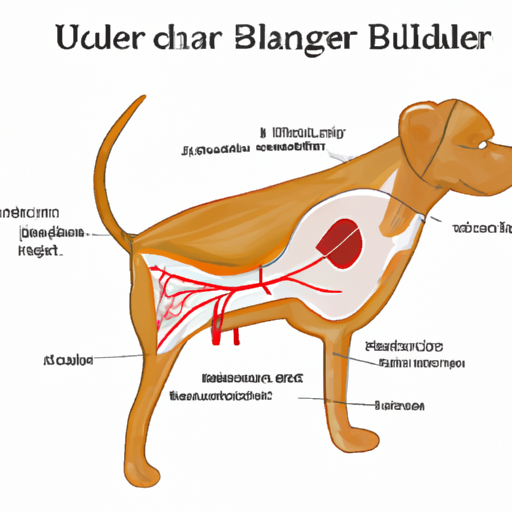We all love our furry friends, but understanding their anatomy can sometimes be a mystery. Today, we’ll dive into the specifics of a dog’s urinary system, focusing on the location and functionality of the bladder.
Understanding Your Dog’s Anatomy
Understanding your dog’s anatomy is crucial in identifying potential health issues. The bladder, an essential part of the urinary system, is located in the lower abdomen, near the pelvic region. It’s nestled between the two hip bones, slightly towards the rear of your pet.
Like humans, a dog’s bladder stores urine produced by the kidneys. It’s a flexible, muscular organ that expands as it fills and contracts to expel urine during urination.
Common Bladder Problems in Dogs
Just as you might experience bladder issues, so can your canine companion. Some common bladder problems in dogs include:
- Urinary tract infections (UTIs): Often caused by bacteria, UTIs can lead to frequent urination, bloody urine, and discomfort.
- Bladder stones: These are hard build-ups of minerals that can block the flow of urine and cause severe pain.
- Incontinence: This is often a problem in older dogs and can result in uncontrollable leaking of urine.
It’s vital to keep an eye out for any abnormal behavior or signs of discomfort in your pet.
Preventing Bladder Issues
Prevention is always better than cure, and this holds true for your pet’s bladder health. Here are some ways you can help maintain your dog’s bladder health:
- Ensure regular exercise: Regular walks not only keep your dog fit but also stimulate regular urination, which can help flush out bacteria.
- Maintain hydration: Fresh water should always be available to encourage regular drinking and urination. This too helps in flushing out the urinary system.
- Serve a balanced diet: Certain foods can promote bladder health, while others might contribute to issues like bladder stones. Consult with your vet for the best dietary choices for your pet.
Recognizing Signs of Bladder Issues
Recognizing signs of bladder issues early can save your pet from discomfort and you from expensive veterinary bills. Here are some signs to watch out for:
| Sign | Potential Issue |
|---|---|
| Frequent urination | UTI |
| Straining to urinate | Bladder Stones |
| Blood in urine | UTI, Bladder Stones |
| Involuntary leakage | Incontinence |
If you notice any of these signs, it’s crucial to consult with your vet immediately.
Frequently Asked Questions
Q: Can bladder issues be fatal to my dog?
A: While not typically fatal, untreated bladder issues can lead to serious complications like kidney infections or blockages that could be life-threatening.
Q: How can I tell if my dog has a bladder infection?
A: Frequent urination, blood in urine, or visible discomfort while urinating could indicate a bladder infection.
Q: Is my dog’s breed prone to bladder issues?
A: Some breeds are more prone to bladder issues than others. It’s best to consult your vet for breed-specific information.
Remember, your care and attention can make a world of difference in your pet’s health. Stay informed, stay observant, and your furry friend will thank you for it!



